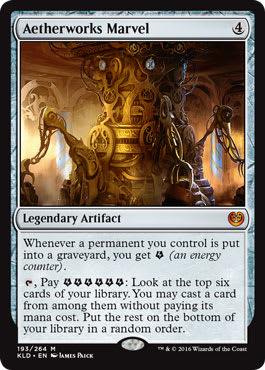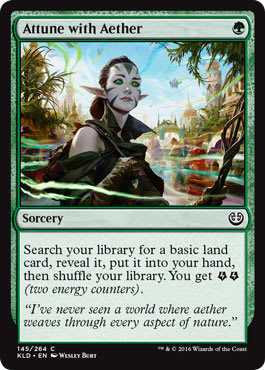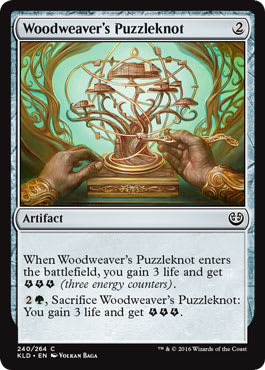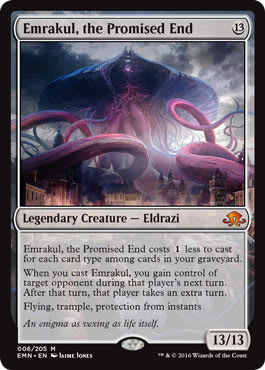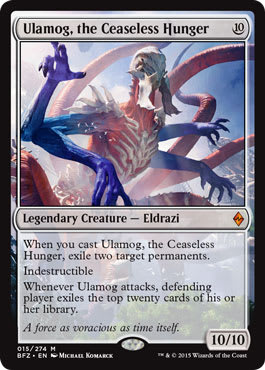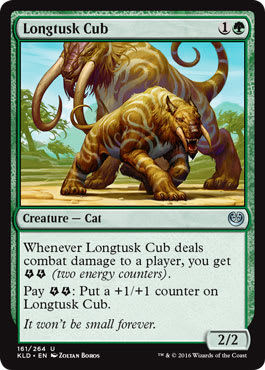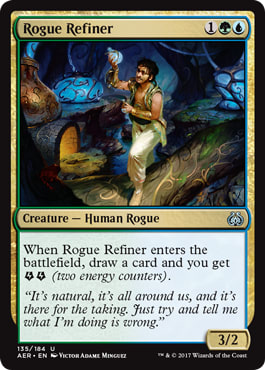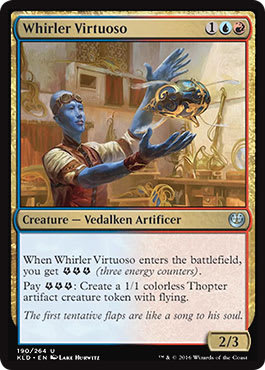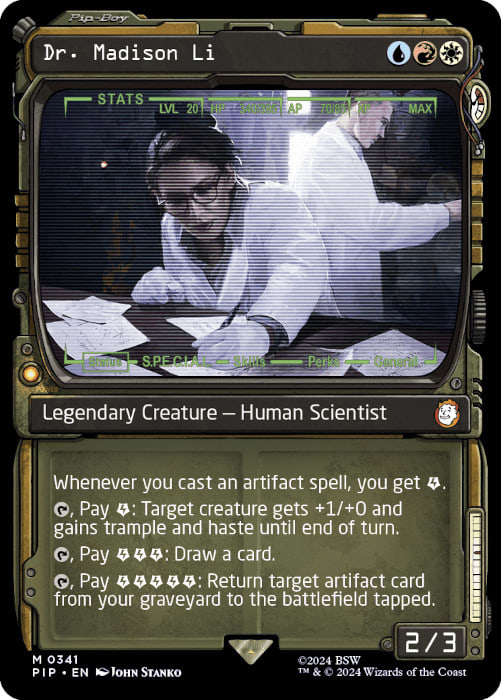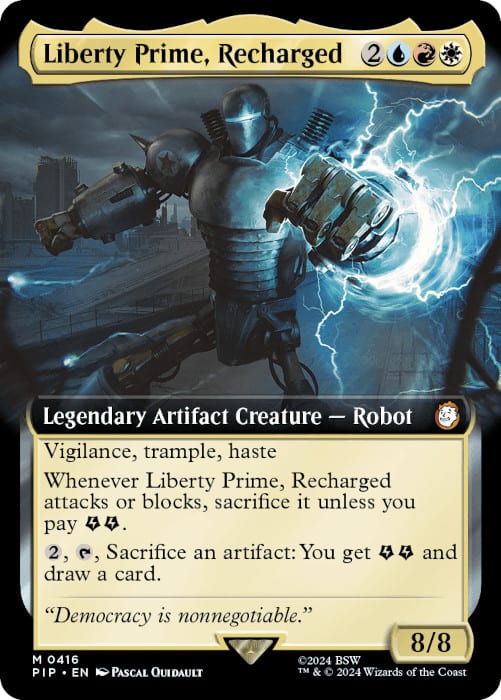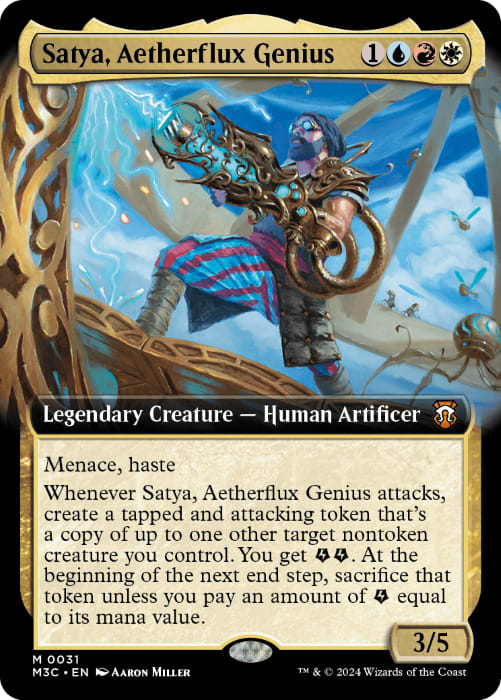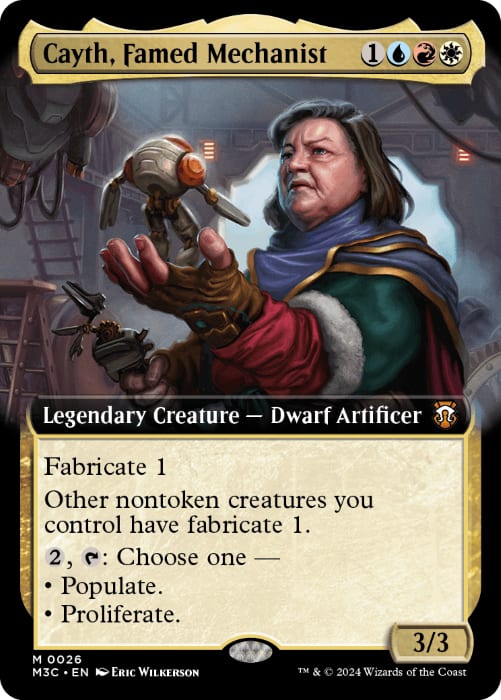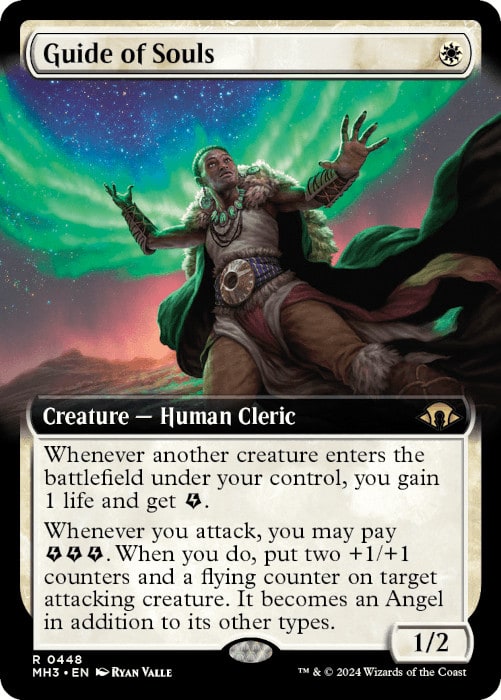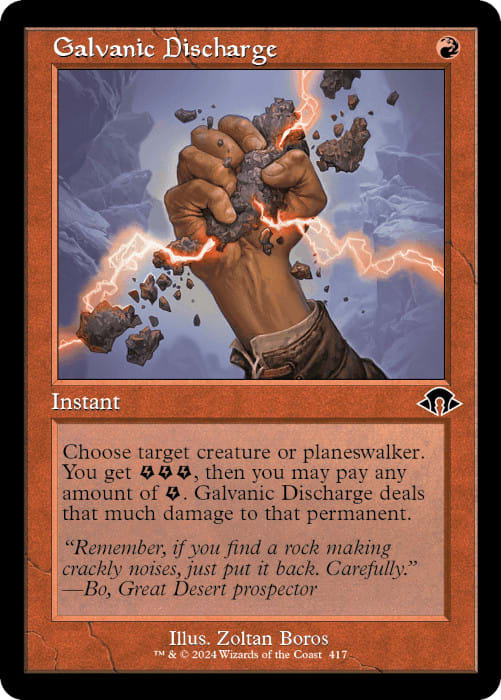Since the introduction of the Energy mechanic in 2016's Kaladesh, the counter-based resource has contributed to practically every classic playstyle across multiple casual and competitive formats. Initially a Standard powerhouse that led to multiple bans, Energy decks were mostly dormant until earlier this year when they became an emerging Commander strategy fueled by cards from the Fallout Commander release. Most recently, following this summer's Modern Horizons 3 set, Energy is back in the competitive limelight as a tier one archetype in Modern.
Energy's story has had multiple ups and downs, but there's no denying the mechanic's flexibility has made it a viable tool for combo, control, midrange, and aggressive decks among players willing to keep track of this additional resource. Looking at the history of Energy decks across formats highlights the mechanic's unique ability to provide both enablers and payoffs that can be equal parts powerful, unpredictable, and perhaps for game designers, difficult to balance.
Energy in Standard Combo Decks
Energy decks became a Standard format staple as soon as the mechanic was first printed. Two decks in particular showcased the power and flexibility of Energy counters, leading to such oppressive game states they required significant action from Magic's Play Design team, in order to keep the Standard metagame under control.
The first deck was a game-ending combo strategy built around an artifact called Aetherworks Marvel, which allowed players to cheat in high cost creatures without paying for their mana value. Although Marvel doesn't inherently do anything when it enters play without some setup, at four mana, players could take their time over the first few turns accumulating Energy counters with Attune with Aether, Woodweaver's Puzzleknot, and Aether Hub, so Marvel could eventually be activated on the same turn it's played for a potential combo win.
Initial versions of the Marvel deck were designed to get a turn four Emrakul, The Promised End into play. Although Marvel might not be entirely to blame, it played its part in Emrakul's eventual ban from Standard play in January 2017, marking the first Standard format ban in six years. Players would eventually discover that Emrakul was a harbarger of things to come, as additional bans loomed on the horizon.
As it turned out, Aetherworks Marvel's power level wasn't tied to any single Eldrazi card, and the combination of early setup enablers followed by a big play on turn four worked just as well with Ulamog, the Ceaseless Hunger. As this revised Ulamog version of the Marvel combo continued to dominate Standard tournaments, Wizards of the Coast finally took more surgical action, and banned Aetherworks Marvel in June 2017.
Energy Midrange Lives On
With the most powerful payoffs gone, Standard players continued to look for a use case for some of the cheap to play enablers in a new, non-combo shell. Though Temur energy existed as a consistent counter-strategy to the previous Marvel decks, the coast was clear for the Temur deck to take over the format for the next few months.
Unlike Marvel, the Temur decks played a more Midrange strategy, pairing the previously proven Attune with Aether and Aether Hub, with new threats such as an early played Longtusk Cub or the late game payoff, Bristling Hydra.
The Temur decks also leveraged the flexible two-for-one effects of Rogue Refiner and Whirler Virtuoso as bodies that can fill a battlefield, draw into more cards, or in Virtuoso's case, provide an evasive win condition by converting Energy into flying thopter tokens.
The strategy was also held up by a powerful removal spell, Harnessed Lightning, which can both produce additional Energy counters, or leverage existing counters to scale up and kill large creatures for only two mana.
Eventually it became clear, perhaps Energy was the problem all along. So, to bring balance to a tumultuous format and cap off a frustrating period of frequent intervention, Wizards took drastic action and banned Attune with Aether and Rogue Refiner in January 2018, essentially killing any likelihood for the deck to remain a Standard competitor.
Fallout Brings New Energy Cards to Commander
Following the 2018 bans, Energy struggled to take off in other formats. Although the Standard bannings remained legal to play in Pioneer, the format's environment proved too efficient for the Temur midrange or Aetherworks Marvel decks to ever gain a sustainable foothold.
But the printing of Fallout Commander decks in early 2024 breathed new life to the Energy mechanic, with the introduction of the game's first Energy-focused legendary creatures, Dr. Madison Li and Liberty Prime, Recharged.
Unlike the cards that saw play in the Kaladesh era, the new Fallout cards played directly into an artifacts-matter theme, and relied on Madison to generate Energy when artifacts entered play, then converting those Energy counters into additional cards or attack buffs.
Liberty Prime, on the other hand, offered a big, aggressive outlet for an Energy strategy, serving as a large beatdown threat that also provided repeatable card draw so the deck never ran out of steam.
The Commander hits kept coming in 2024 with the release of Modern Horizons 3, which included a diverse mix of Energy cards in both the main set and supplemental Commander products, including several new legends that redefined the shape of Energy strategies.
Satya, Aetherflux Genius creates copies of creatures that can stick around for multiple turns if you have enough Energy to match their mana value. Meanwhile, Cayth, Famed Mechanist can make creatures larger with extra +1+1 counters, or "fabricate" extra artifact tokens into play.
MH3 essentially managed to thread the needle between the previous year's Fallout cards and the original Kaladesh foundation, allowing players to combine new and old tools for more consistent execution of combo plays, or more threatening creature-based board states.
A Modern Outlet for Energy
The final stop in our journey through the history of Energy is a chapter that's still being written. The aforementioned release of Modern Horizons 3 came with a slew of efficiently costed Energy-based threats, enablers, and interaction, all of which came together to form a brand new deck in a format whose cardpool spans more than 20 years.
The most dominant and popular version of Modern Energy is an aggressive, Red and White (aka Boros) strategy that leverages an early resource engine in Guide of Souls, who steadily produces Energy counters as more creatures enter play. Although not every creature in the deck specifically cares about Energy, nearly all of them play well with Guide of Souls to amass enough counters that the Guide can then turn itself or other attacking creatures into bigger, flying threats.
The deck also utilizes Amped Raptor to convert the Energy you've accrued into free cards off the top of your library, allowing the pilot to snowball into massive board states that cheat on mana while building up the deck's Energy reserve.
Thanks as well to a pair of new interaction spells in Galvanic Discharge and Static Prison, the Boros deck can also answer nearly all of Modern's most problematic permanents for the low cost of one mana. All together, Boros Energy has been honed into an explosive deck with a solid midrange backup plan that's likely to stay competitive in Modern for the foreseeable future.
However, the Boros deck is not the only strategy benefiting from Modern's new Energy cards. A Red, White, and Blue (Jeskai) control deck utilizes some of the Boros interaction along with a one mana cantrip called Tune the Narrative, to play a fairly traditional draw-go playstyle that's common to classic Blue/White-based control decks. Jeskai control also puts MH3's Wrath of the Skies on display, as a cheap way to wipe a board full of creatures, often for the low price of two mana - an effect that frequently cost at least 4 mana in previous control strategies.
While there's no indication of more Energy cards being printed in upcoming sets, Wizard of the Coast's willingness to revisit the mechanic in different formats and releases might be a clue that we haven't seen the last of this mechanic. As for the players who routinely collect Energy cards as they're released, hopefully the latest cards and subsequent additions to lead to another wave of bans that Standard players dealt with in 2017.
















